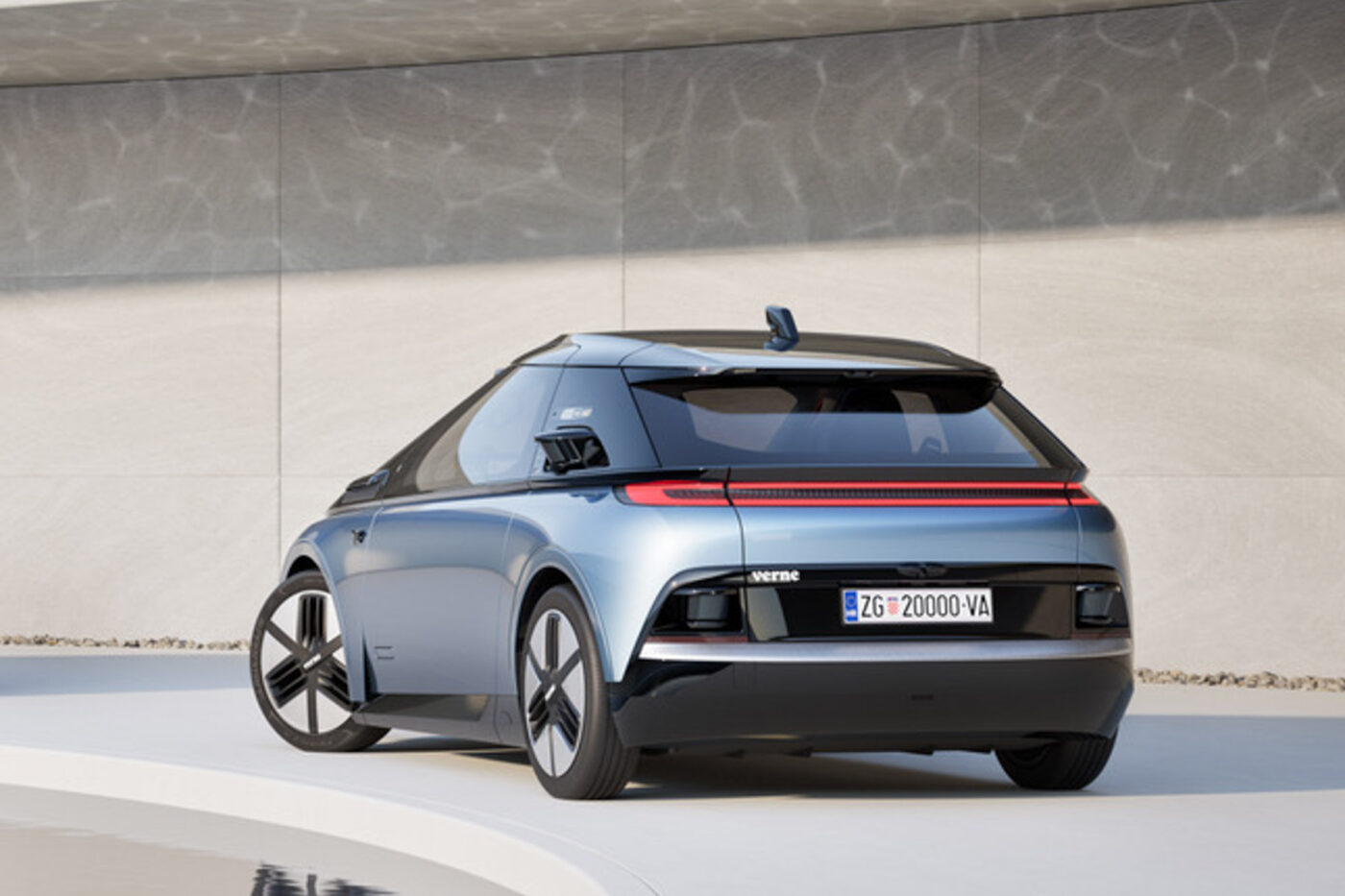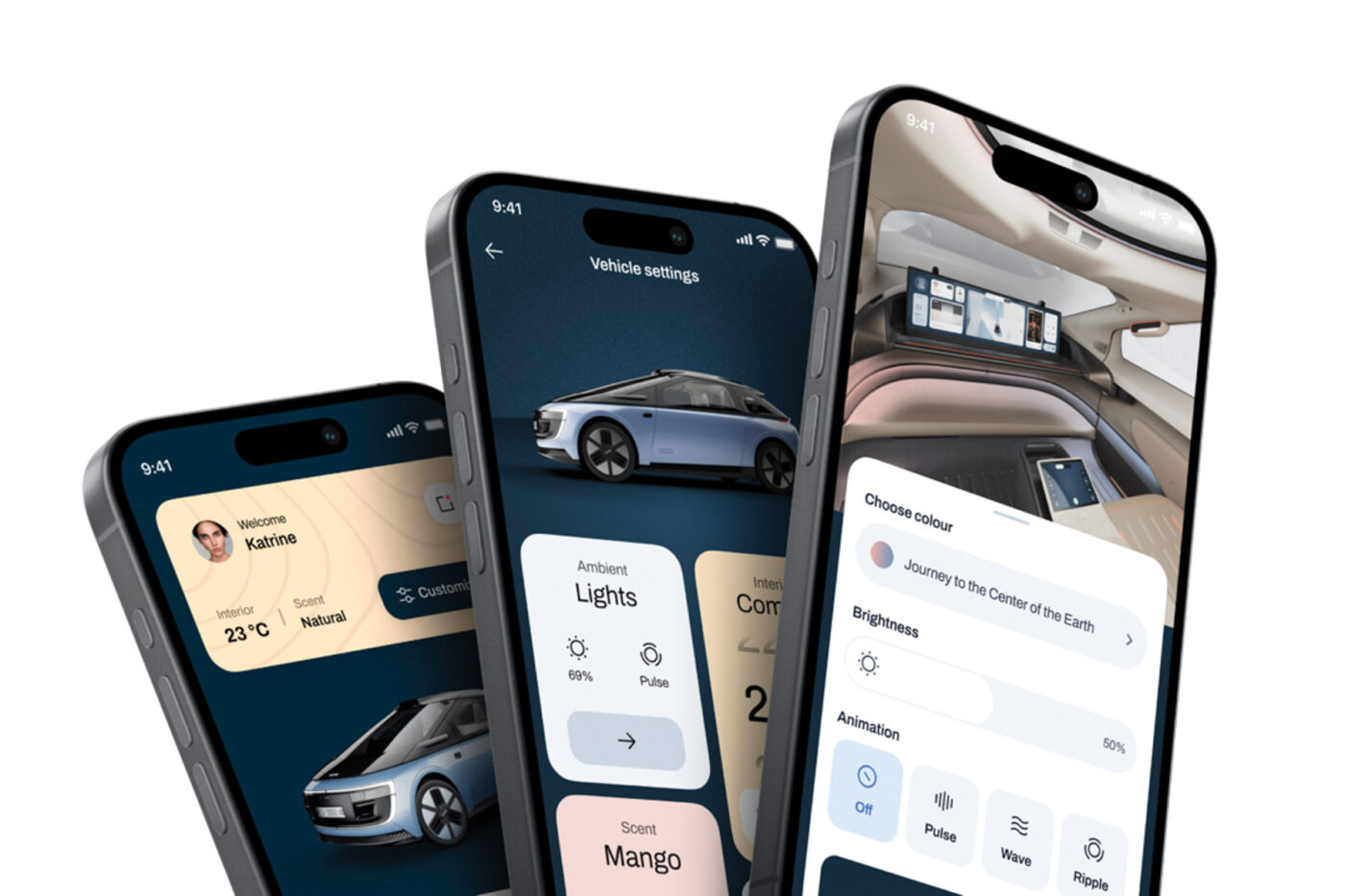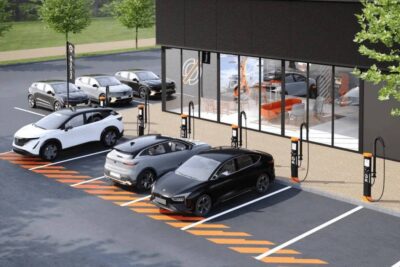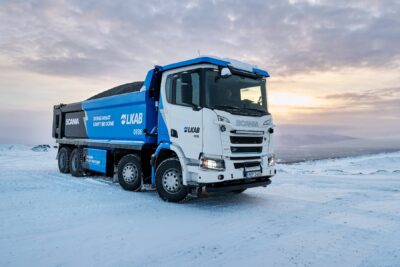Rimac reveals robotaxi service ‘Verne’
The other pillars of Verne besides the vehicle are an app and a special infrastructure. But first to the vehicle itself: Previous announcements of the development of a robotaxi service have mostly featured minibus-like people movers. Rimac, on the other hand, is focussing on a futuristically designed compact model, which is even only designed as a three-door vehicle – i.e. for one or two passengers.
Rimac has developed its own platform for this, which is designed exclusively for autonomous driving – and is therefore “free from the compromises and disadvantages” that are necessary when “using a legacy platform built for human driving”. For the autonomous driving systems, the Croatian company relies on technology from MobilEye: three lidar sensors are installed for long-distance detection, six more for short distances and a total of 13 cameras. The MobilEye software calculates the course from the data collected in this way – in any weather and at any time of day, as Rimac emphasises.
In terms of drive technology, the Verne vehicle does not set any standards like the Rimac Nevera once did – however, the vehicle for the robotaxi service should also be as cheap as possible to produce and operate. The electric motor has an output of around 150 kW, and a 60 kWh LFP battery is also installed. Rimac specifies a range of 240 kilometres, which should be sufficient for the planned robotaxi use in cities. Larger batteries would therefore be unnecessary and more expensive.





In addition, there is also Verne’s infrastructure concept: a central hub called “mothership” is also planned – the specialized infrastructure mentioned at the beginning. This is where each vehicle will travel at least once a day to charge the battery and be cleaned. As a completely new vehicle has been developed and not just an existing minibus converted, Rimac even wants to be able to replace upholstery and consoles in the passenger grip area in just a few minutes. Inside, there is also a large, central touchscreen – and nothing else. Even for the initial phase, there is no backup to the autonomous driving system, so no pedals or steering wheels.
The vehicle and “mothership” are combined with the Mobility Service Platform, which customers can access via the Verne app. The robotaxi can not only be ordered via the app but also customised in advance: Some comfort settings, the colour of the ambient lighting, the interior temperature and even special smells can be sent to the vehicle in advance. “Even though the customer will never own the vehicle, it will be tailored to feel like your own,” writes Rimac.
Verne is set to launch in 2026, initially in Zagreb and then in other European cities (initially in the UK and Germany) and in the Middle East. Verne plans to build the electric robotaxis in a new plant in Zagreb. Verne will not be managed by Mate Rimac himself, but by Marko Pejkovic. Together with Mate Rimac and Nevera designer Adriano Mudri (now Chief Design Officer at Verne), Pejkovic has developed the vision behind the robotaxi service.
“We want to make a difference with our holistic integrated approach, which is designed around the best possible experience,” says co-founder Mate Rimac. “The end result would be the best possible mobility experience for everyone. This means that every customer will have a better service than the best mobility service enjoyed by the very rich, through the service that is affordable for all. You will have a safe and reliable driver, a vehicle with more interior space and comfort than the best limousines today, and a service that will be tailored to your needs in every possible way.”
Source: Info via email




1 Comment